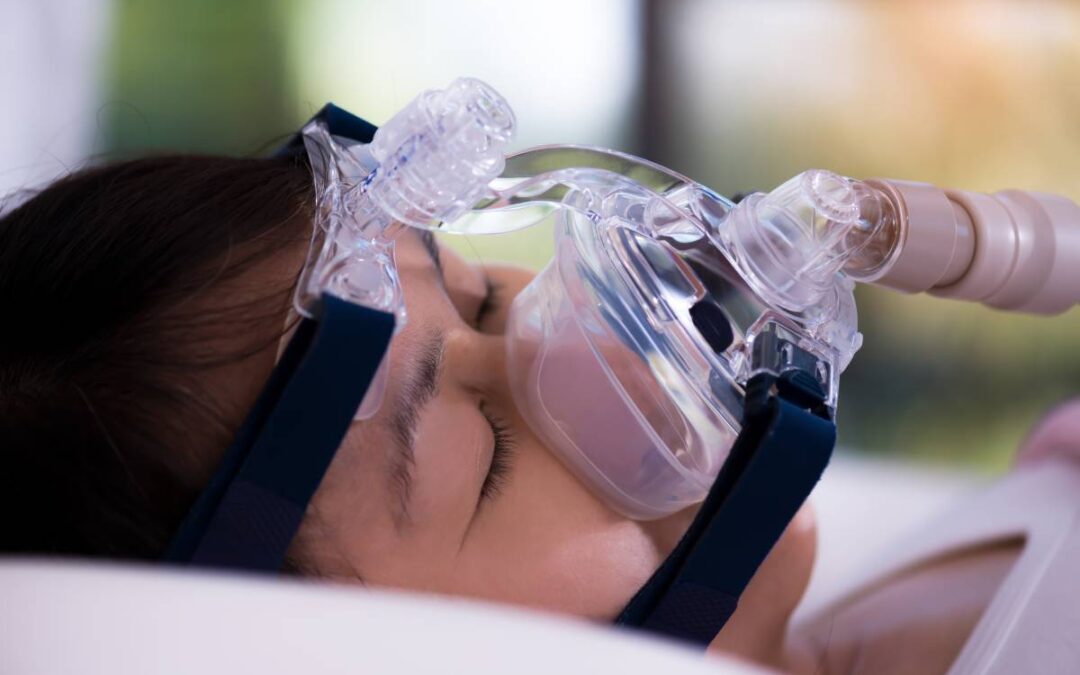Obstructive sleep apnea (OSA) is a common sleep-related breathing disorder characterized by recurrent interruptions (apnea) or reductions (hypopnea) of flow in the airway [1,2]. The prevalence of OSA is estimated to be between 3 and 7% in the general population and at least 25% in the surgical population [1]. In some populations, such as patients undergoing bariatric surgery, the prevalence of OSA can be as high as 80% [1]. OSA is associated with several comorbidities, such as coronary artery disease, elevated arterial blood pressure, increased risk of stroke, and respiratory failure [2]. For these reasons, OSA is an important risk factor for perioperative morbidity and mortality [2]. Treatments for OSA exist, such as CPAP, however, the extent to which patients adhere to CPAP treatment in the perioperative period is unclear.
The American Society of Anesthesiologists (ASA) recommends preoperative screening of surgical patients for OSA and initiation of treatment if significant OSA is determined [5]. Continuous positive airway pressure (CPAP) is the mainstay treatment for OSA [1]. CPAP functions as a pneumatic upper airway splint, preventing airway collapse and subsequent oxygen desaturation [1]. Auto-titrated CPAP (APAP) is a special type of CPAP [3]. APAP operates on the basis of breath-by-breath measurement of flow, adjusting pressure delivery over the course of the night to the minimal pressure required to maintain an unobstructed airway [3]. APAP also can be initiated without in-laboratory CPAP titration [3]. These features of APAP are very beneficial for newly diagnosed OSA patients because it allows for earlier scheduling of surgery [3]. Typically, it is challenging to assess a suspected OSA patient and initiate CPAP treatment without delaying scheduled surgery [3]. APAP administered to newly diagnosed OSA patients has been linked to reduced postoperative apnea and hypopnea, and improved SpO2 [1].
However, CPAP non-adherence is a significant barrier to OSA management [6]. Recommended use of the CPAP machine is 6 to 8 hours every night, but researchers have defined CPAP adherence as an average of 4 hours at night for 70% of nights [6]. Studies have published non-adherence values ranging from 25 to 50% in the general population [2]. Similarly, non-adherence to CPAP in surgical patients with newly diagnosed OSA is roughly 55% [1]. Until recently, there was a gap in the literature regarding perioperative adherence of CPAP in surgical patients with a pre-existing diagnosis of OSA [1]. In 2021, researchers at the University of Toronto sought to determine the effect of adherence to CPAP on postoperative oxygen saturation [1]. They observed a CPAP adherence rate of 61% preoperatively and 49% for the full perioperative period, and that adherence was associated with significantly improved blood oxygen levels [1].
Few studies report data on long-term CPAP adherence and presently no single factor has been identified as being predictive of adherence [4]. Many situational and personality factors have been shown to influence adherence patterns [6]. Socioeconomic status plays a significant role, as the CPAP machine is expensive even when subsidized [6]. In one study, CPAP non-adherence was associated with living in a poorer neighborhood [6]. Patients have also cited life-stressors as reasons for non-adherence [6]. These factors include lack of time, instability at home, and depressive moods [6]. Understanding the lifestyle and cognitive disposition of the patient is helpful in identifying patients who are at risk of non-adherence and may require additional counselling and support [6].
References
- Suen, C., Wong, J., Warsame, K. et al. (2021). Perioperative adherence to continuous positive airway pressure and its effect on postoperative nocturnal hypoxemia in obstructive sleep apnea patients: a prospective cohort study. BMC Anesthesiology, 21(1). doi:10.1186/s12871-021-01371-0
- Deflandre, E., Degey, S., Bonhomme, V. et al., (2015). Preoperative adherence to continuous positive airway pressure among obstructive sleep apnea patients. Minerva Anestesiologica, 81(9), 960–967. PMID: 25479468. https://pubmed.ncbi.nlm.nih.gov/25479468/
- Liao, P., Luo, Q., Elsaid, H. et al. (2013). Perioperative Auto-titrated Continuous Positive Airway Pressure Treatment in Surgical Patients with Obstructive Sleep Apnea. Anesthesiology, 119(4), 837-847. doi:10.1097/aln.0b013e318297d89a
- Jacobsen, A., Eriksen, F., Hansen, R. et al. (2017). Determinants for adherence to continuous positive airway pressure therapy in obstructive sleep apnea. PLOS ONE, 12(12), e0189614. doi:10.1371/journal.pone.0189614
- Guralnick, A., Pant, M., Minhaj, M. et al. (2012). CPAP Adherence in Patients with Newly Diagnosed Obstructive Sleep Apnea prior to Elective Surgery. Journal Of Clinical Sleep Medicine, 08(05), 501-506. doi:10.5664/jcsm.2140
- Shapiro, G., & Shapiro, C. (2010). Factors that influence CPAP adherence: an overview. Sleep And Breathing, 14(4), 323-335. doi:10.1007/s11325-010-0391-y







Recent Comments